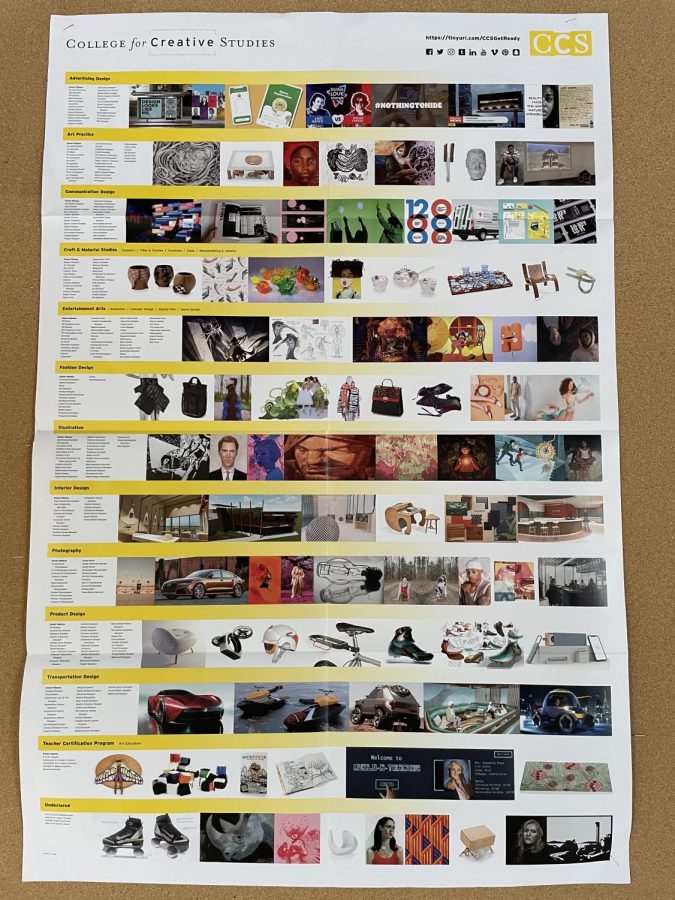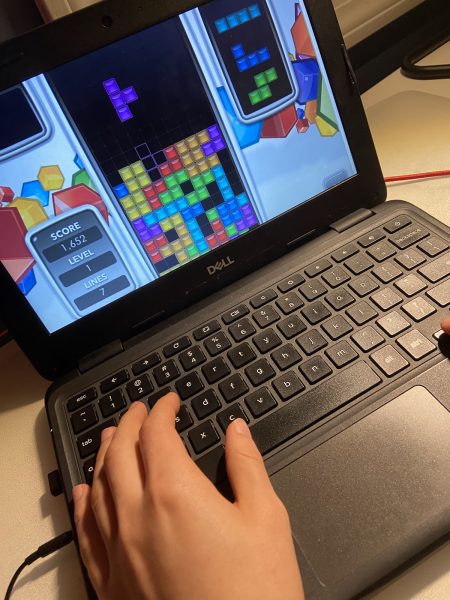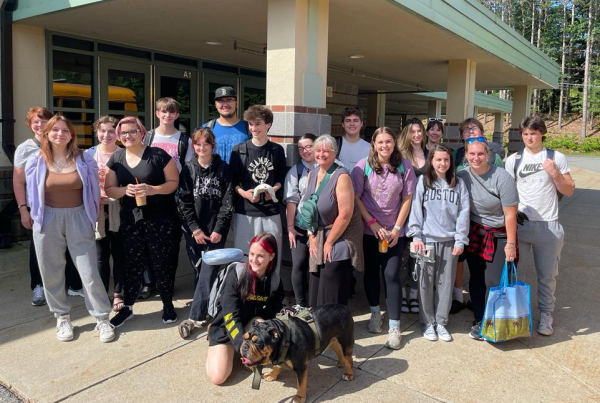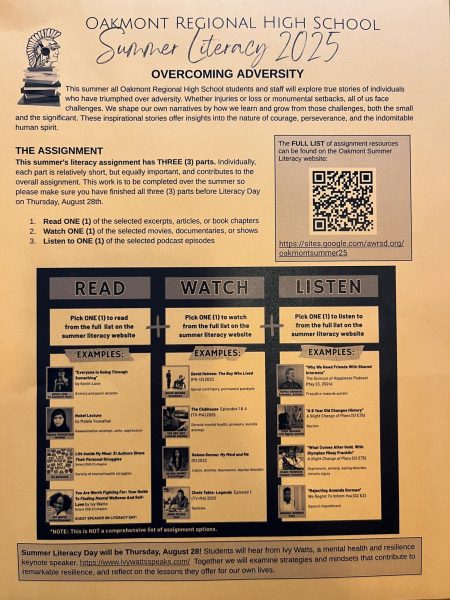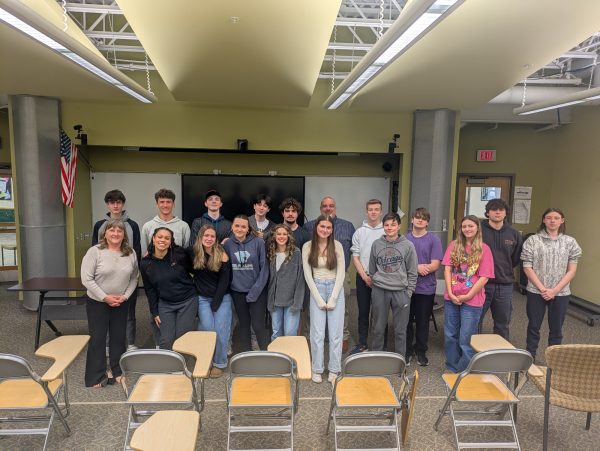Difficult Decisions: College and Career Planning
For some seniors, being told that it is time to fill out college applications is the most scary and stressful thing they’ll hear all year. For other seniors, the thought of going off to college is what pushes them through the remainder of their senior year. It can be exciting, having one chapter of your life end and another one begin, but for the soon to be high school graduates that have no idea what they want their next chapter to look like, it can be extremely overwhelming.
High school is a time when students can explore different subjects, hobbies and passions. Most high schools require all of their students to take the same core classes, but allow the students to select their own electives, allowing them to explore different fields of study. The Oakmont Regional High School handbook states that each student must complete the following required courses: 4 English classes, 4 Math classes, 3 Science classes, 3 Social Studies classes, 3 Gym classes, and 2 Foreign Language classes, as well as elective courses in order to graduate.
However, there are only so many courses available and many high schools have had to do away with elective programs due to budget cuts. According to The Public School Review, over 8,000 United States public school districts are without music programs, and 12 states have cut funding for elective programs altogether. As stated by The Public Policy Institute of California, two thirds of seniors will attend a two or four year college, but only 30% of them will earn their desired degree. Without the opportunity to take classes in a certain subject matter, prior to graduation, many students will not be exposed to subjects they may enjoy.
According to the College Raptor, a website that provides advice on navigating college to students, an astounding 80% of college students have changed their major at least once. Azusa Pacific University has found that the changing of college majors is an effect of the lack of course diversity in high school.
Choosing the right path for after high school is yet another daunting task for teenagers. The military, the workforce, 2 year college, 4 year college – the list goes on and on. One choice that you make as a seventeen or eighteen year old will shape the rest of your future. While a majority of high school guidance counselors hold seminars and informational sessions regarding post high school options are often not presented to students until the beginning of junior year, says The Fordham Institute.
As reported by the Strada Education Network, over 28% of college students say that they wish they had chosen another college. If students were informed and more prepared about the difficult decisions they would have to make earlier, they would have more time to carefully weigh the pros and cons of all of their options.
The financial burden of college should also be discussed more in high schools. According to a study administered by the National Center for Education Statistics, only 11% of ninth graders have any knowledge of the tuition and fees required to attend one year of college, and more than 70% of high school students had little or no understanding of financial aid. Students must be educated on the way that college works, financially, in order to pick a college that will allow them to succeed, while still considering amount of debt in their adult life.
While there are many other great resources that help students prepare for the college application and major selection process, students shouldn’t be expected to navigate the brand new, confusing world of college and career selection with limited help from school counselors. Although some high schools allow students to explore different careers and colleges in school, the majority of high schools leave students to their own devices until junior year, states the State University of New York website.
The college and career search has always been a difficult process for young adults. There are so many components to take into consideration when selecting a post high school path. High school administrators, counselors, and students already have enough to juggle, but it seems there should be a heightened awareness on the college and career selection process.

Delaney Taylor is currently a senior here at ORHS, as she is a member of the Class of 2023. Delaney has served as the editor of The Oakmonitor for the...


